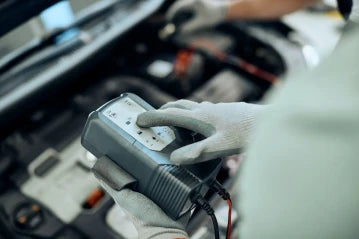
Welcome to our blog, dear solar enthusiasts! If you're considering harnessing the power of the sun and joining the eco-friendly energy revolution, you've come to the right place. Today, we'll dive into an essential aspect of your solar setup - calculating the ideal battery requirements for an 8000W solar inverter. This guide will help you make informed decisions as you embark on your journey towards a greener, more sustainable future.
Understanding Power and Energy Consumption
Before we delve into the nitty-gritty of batteries, let's clarify some basics. A solar inverter is a magical device that converts the direct current (DC) produced by your solar panels into the alternating current (AC) that powers your home appliances. Now, that 8000W rating might have caught your attention, but remember, it represents the inverter's capacity to handle peak power demands, not the continuous output.
Factoring In Efficiency Losses
Solar inverters are pretty smart, but they aren't 100% efficient. Some power is lost during the conversion process. Fear not, though, as modern inverters boast high efficiencies, usually in the range of 95-98%. To ensure you get the most out of your system, it's crucial to consider these efficiency losses when calculating your power requirements.
Determining Battery Capacity
Now, let's talk batteries - the true workhorses of your solar setup. The battery capacity is measured in ampere-hours (Ah) and determines how much energy your batteries can store. To determine the right capacity for your 8000W solar inverter, you need to consider two vital factors - backup time and energy consumption.
1. Identify the Desired Backup Time
Think about how long you want your solar system to sustain your energy needs during power outages. Do you aim for a few hours, half a day, or even longer? The answer to this question will set the foundation for calculating your battery capacity.
2. Calculate the Energy Consumption per Hour
Take a look at your average energy consumption per hour. This is where your electricity bills come in handy. Keep in mind that energy consumption can vary based on seasons and usage patterns, so it's wise to analyze a representative period.
3. Factor in Discharge Depth Limitations
Batteries, especially lead-acid ones, don't appreciate being fully drained. To extend their lifespan, it's recommended not to exceed a 50% discharge depth. Factor this limitation into your calculations to ensure your batteries serve you faithfully for years to come.
4. Select the Appropriate Battery Voltage
Solar batteries typically come in various voltages like 12V, 24V, or 48V. Choosing the right voltage for your system affects the number of batteries you'll need and their connection configuration. Higher voltages generally mean fewer batteries, but it depends on your specific power requirements.
5. Perform the Final Calculation
Now that you have all the data, it's time for the big reveal! Use this formula to calculate your required battery capacity:
Required Battery Capacity (Ah) = (Energy Consumption per Hour (Wh) × Backup Time (hours)) / (Discharge Depth × Battery Voltage (V))
Battery Chemistry and Recommendations
The type of battery you choose can significantly impact the performance and longevity of your solar energy system. There are two main contenders in the solar battery arena - lead-acid and lithium-ion batteries.
1. Lead-Acid Batteries
Lead-acid batteries have been around for a long time and are known for their affordability. They are available in two flavors: flooded lead-acid and sealed lead-acid (AGM or gel). While they may require more maintenance, they are a reliable option for budget-conscious consumers.
2. Lithium-Ion Batteries
Lithium-ion batteries have gained popularity due to their impressive energy density and longer lifespan. Although they come with a higher price tag, they require minimal maintenance and offer better performance overall.
Safety Considerations
Safety is paramount when dealing with solar inverters and batteries. Here are some essential tips to keep you, your family, and your solar investment safe:
1. Professional Installation: Always rely on certified technicians to install your solar energy system. This ensures everything is set up correctly and safely.
2. Proper Ventilation: Ensure your batteries are placed in a well-ventilated area to prevent overheating and potential hazards.
3. Maintenance Checks: Regularly inspect your batteries for signs of wear and tear, and promptly address any issues.
Expansion and Redundancy Options
As you embrace the solar energy lifestyle, you might find that you crave more autonomy and longer backup times. Fear not, for your solar setup is expandable! By adding more batteries to your system, you can extend your backup time and enjoy even greater independence from the grid.
Conclusion
Congratulations! You're now equipped with the knowledge to make informed decisions about your battery requirements for an 8000W solar inverter. Remember to consider your energy needs, battery capacity, and safety measures as you embark on this exciting journey towards a greener and more sustainable future. Embrace the power of the sun, reduce your carbon footprint, and take control of your energy destiny. Happy solar power adventures!

0 comments